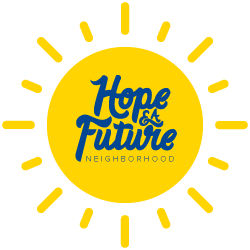During my undergraduate studies, I was introduced to the theories that represent the foundation of understanding of human development and human relations. While they were all of interest in some way, I always connect the strongest with the work of Uri Bronfenbrenner and his Ecological Systems theory because it highlights the reciprocal relationships that exist to form and influence our human existence. It is the theory that explains why community is influential, impactful and necessary for healthy development.
The theory is presented as a series of concentric circles indicating varying levels of interaction and the reciprocal  relationships that we have within and between each system that impact development. While each system influences the others, the most direct influence on the individual occurs in the Microsystem. This system includes the humans who are closest to us (social) as well as the places (physical) that we interact with most often. The Microsystem acts as a buffer or safe place for us to explore, learn, and grow. It is designed to be a place of acceptance, protection and love. Parents, siblings, mentors, teachers, close friends and colleagues may be a part of this supportive microsystem. We are nurtured, nourished and protected in the safety of our microsystem.
relationships that we have within and between each system that impact development. While each system influences the others, the most direct influence on the individual occurs in the Microsystem. This system includes the humans who are closest to us (social) as well as the places (physical) that we interact with most often. The Microsystem acts as a buffer or safe place for us to explore, learn, and grow. It is designed to be a place of acceptance, protection and love. Parents, siblings, mentors, teachers, close friends and colleagues may be a part of this supportive microsystem. We are nurtured, nourished and protected in the safety of our microsystem.
I recently had the opportunity to host a group of volunteers from the Wisconsin Food Forests. They provided a short workshop about plant communities and specifically, the Fruit Tree Guild. I learned that a Fruit Tree Guild is an interconnected ecosystem of diverse plants, insects and animals that support each other in a mini ecosystem. They are arranged around the drip line of the tree which is the outer circle of the branches. Ruth Boy was the lead workshop facilitator. She presented how the diverse types of plants in the ecosystem protect and nurture the fruit tree.
Nitrogen fixing plants: such as legumes, peas, and clover, enhance soil fertility by converting atmospheric nitrogen into a form of nitrogen that plants can use.
Pest repelling plants: such as marigolds, lavender and basil. These type of plants repel pests through their scent or chemical properties. Planting these types of plants alongside more vulnerable crops can help protect them from harmful pests.
Pollinator attracting plants: such as wildflowers, lavender, and sunflowers, all attract beneficial pollinators that are crucial to the reproductive process of many plants.
Ground cover plants: plants in this category are clover, ivy and creeping thyme. These plants protect the soil from erosion. They help retain moisture and reduce the impact of heavy rains.
Bioaccumulating plants: also known as hyperaccumulators or phytoremediation plants can absorb heavy metals and toxins from the soil and store them in their tissues. Some of these are mustard plants, sunflowers and certain species of ferns. Some can remove contaminants, like lead, arsenic, cadmium, and improve soil health by making it safer for plants to grow.
It was a fantastic plant ecosystem lesson but I also noted so many parallels between the ecosystem of the guild and the microsystem that Hope & A Future’s neighborhood will provide. I told Ruth about the parallels I was seeing between our neighborhood model of support and the ecosystem of the plants in the guild. She loved this parallel as well as we discovered these insights:.
- Nitrogen fixers- all of the neighborhood members contributing to the growth and well being of one another by sharing resources and support. The sharing of support between neighbors and within the neighborhood is a vital component.
- Pest repelling- individuals, and the neighborhood as a whole, take a protective role and offer their support and guidance to protect program participants and everyone living in the neighborhood.
- Pollinators-the neighborhood staff and members who assist with or facilitate connections for growth by introducing people to new opportunities, resources or networks.
- Ground Cover-Program staff and neighbors providing emotional support and mentorship that foster individual and community resilience.
- Bioaccumulators- Relationships and resources in the neighborhood ecosystem mitigating harmful influences in the community
When functioning well, both the human and environmental ecosystems support and nurture its members through a community effort. At Hope & A Future we are committed to eliminating the siloed systems that create barriers to connection by integrating an internal ecosystem of support within and between neighbors. In the expansion the intergenerational programs, services, and housing will offer people of all ages the opportunity to nurture, protect, and grow in a supportive community encouraging hope and resilience for all.



